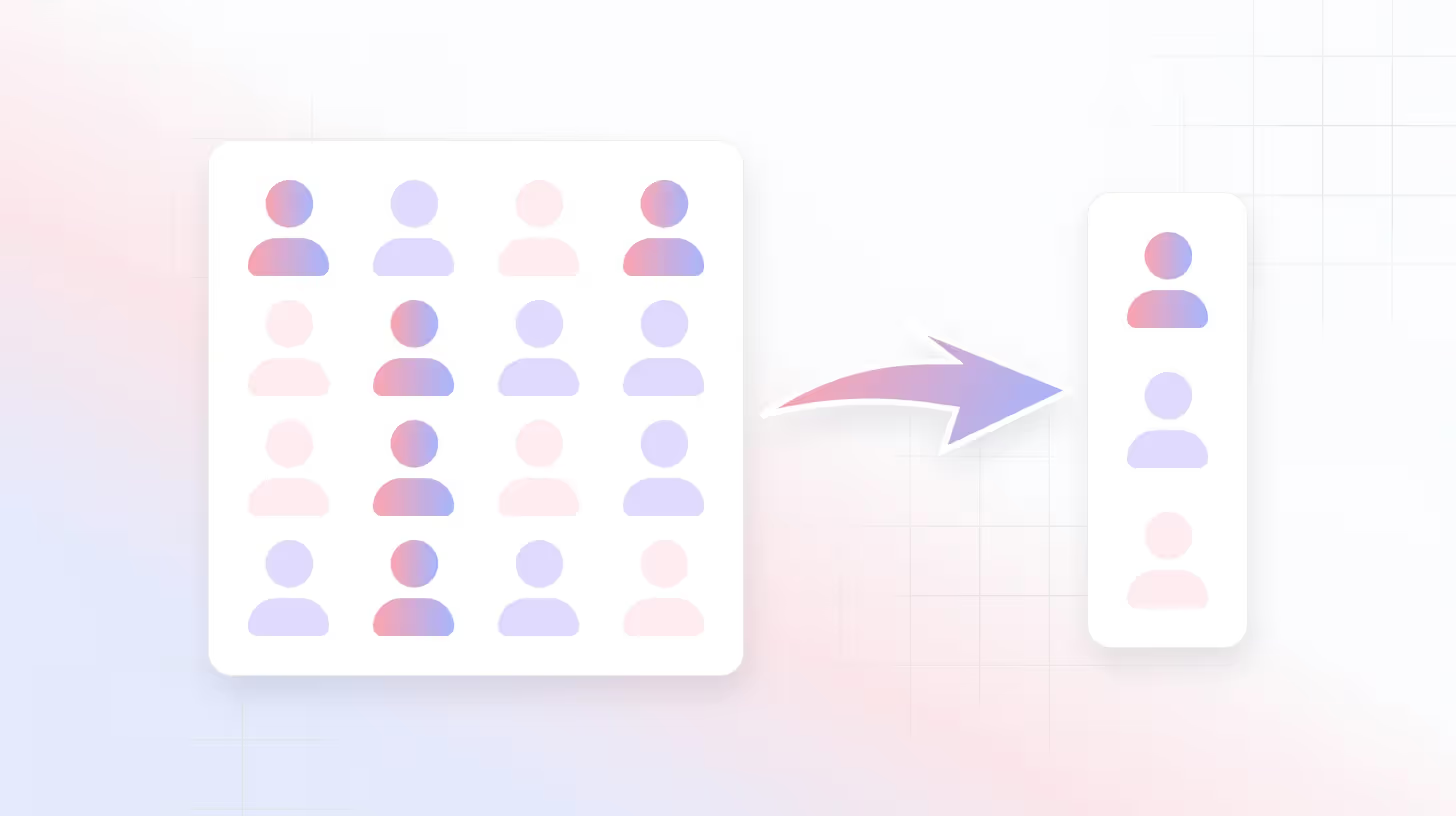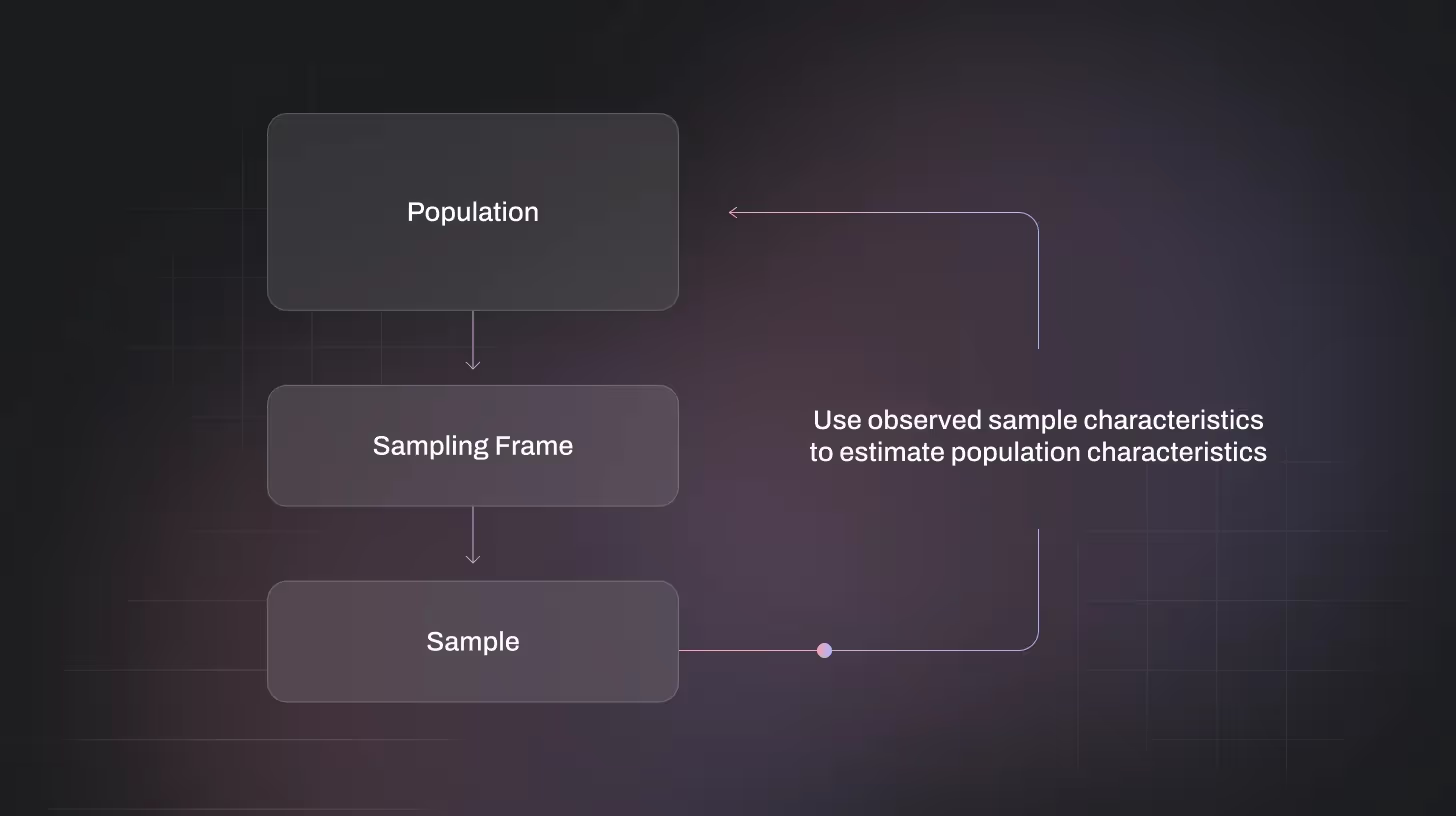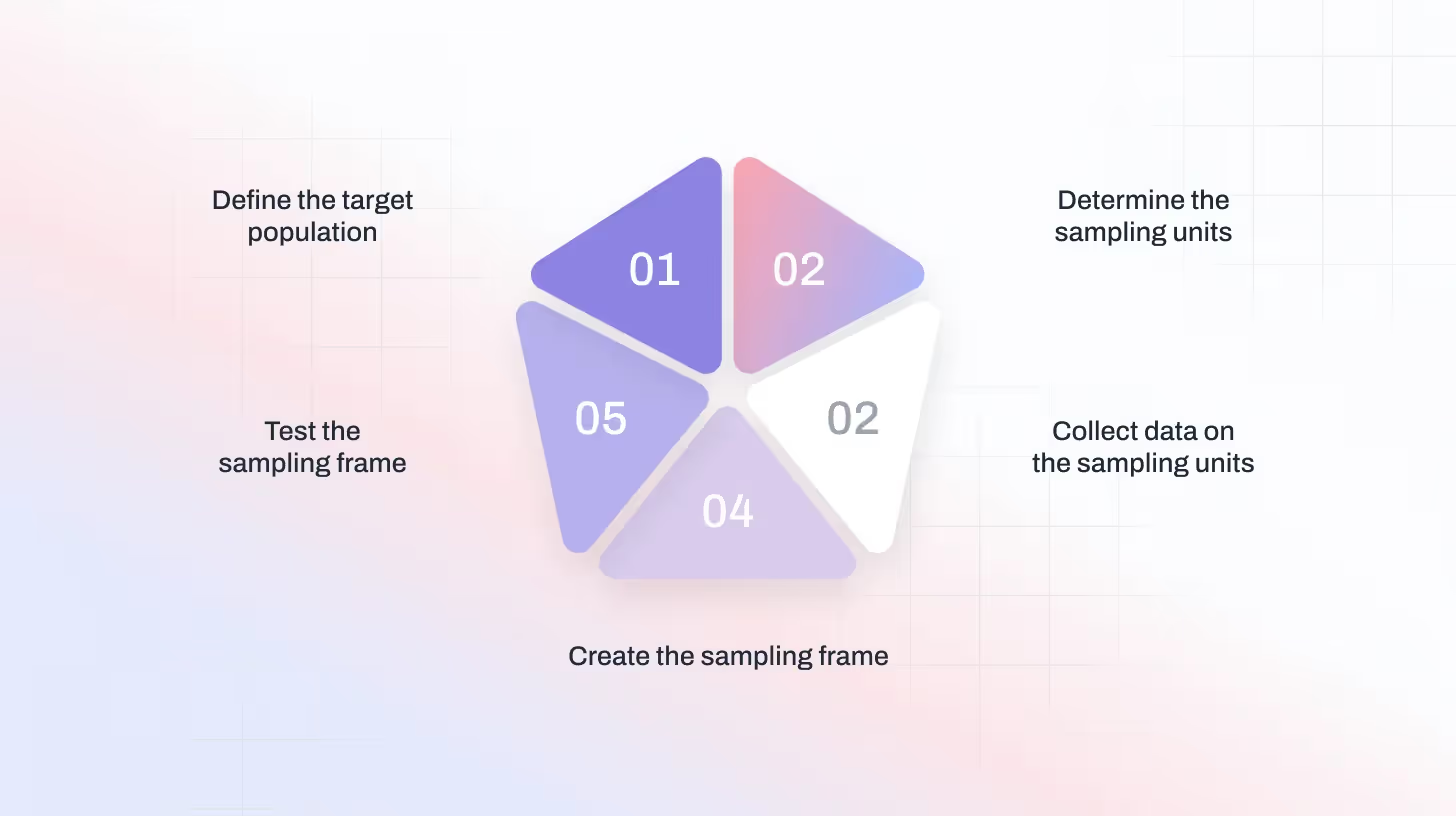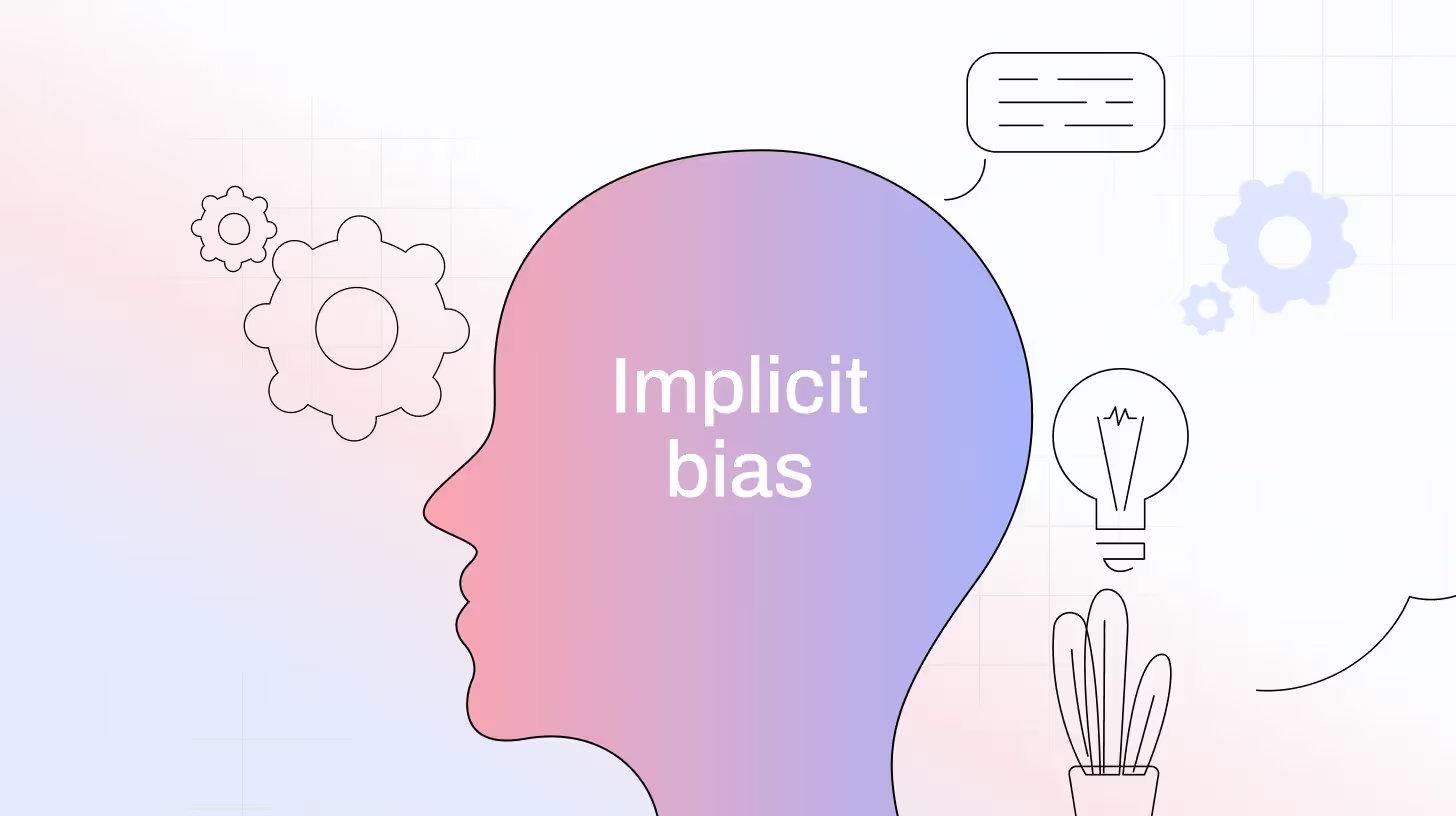 Blog
Blog Sampling Frame Explained: Definition, Examples, and How to Use it
Sampling Frame Explained: Definition, Examples, and How to Use itSampling Frame Explained: Definition, Examples, and How to Use it

Have you ever launched a survey only to realize that the results didn’t quite match your expectations? Maybe the responses felt off, or certain groups seemed overrepresented. The problem often isn’t the questions but your survey sampling frame.
A sampling frame is a list of all the individuals or units from the population of interest. It determines who gets surveyed, how representative your responses are, and ultimately how trustworthy your insights become.
In this blog, we’ll break down everything you need to know about survey sampling frames, what they are, the key characteristics of a great one, real-world examples, and the main advantages and limitations. We’ll also walk you through how to identify the right sampling frame for your research so you can collect data that truly represents your audience.
Let’s get started!
What is a sampling frame?
A sampling frame is a complete list or database that includes all the elements of the target population that could be selected for your study. It is also known as “sample frame” or “survey frame”.
In research terms, the survey sampling frame serves as the operational representation of the target population. It allows researchers to assign numbers, names, or identifiers to each unit in the population and then use statistical techniques to draw a sample from that list.
A sampling frame refers to a reference for identifying potential respondents. Each individual or unit in the frame has a unique identifier and reliable contact information, such as an email address, phone number, or household record. This setup allows researchers to organize and segment participants based on key characteristics like location, age, or customer type.
In practice, creating a sampling frame means assembling a comprehensive list of all individuals or entities in the target population, along with a systematic process for selecting your sample. This could include:
- A list of registered voters for a political survey
- A company’s customer database for market research
- Hospital records for a health study
Essentially, any resource that provides the necessary information to reach and identify every individual in the target group can serve as a sampling frame.
Read: Sampling Design Explained: Steps, Challenges, and AI Solutions

Characteristics of a Great Sampling Frame
A good sampling frame is a foundation for your entire research project. If your foundation is weak, your results can crumble no matter how good your questions and analysis are.
So, what does a good sampling frame look like?
- Your sampling frame should include everyone in your target demographic.
- Make sure your list has current contact information and doesn’t include outdated or duplicate entries.
- Each entry should have enough details to find or reach that person or unit, like a name, email address, phone number, or ID.
- Arrange your list alphabetically or by category so it’s easy to search, filter, and manage.
- Review your frame for changes in contact details, addresses, or availability. A great sampling frame is a living document, not a one-time task.
What are the types of sampling frames?
Here are the main types of sampling frames researchers usually work with:
List-Based Sampling Frame
This is probably the most straightforward type. It’s basically a pre-existing list or database that already represents your target group. For example, a university might use a student enrollment list to survey students about online classes. A company could use its customer database to understand purchase behavior. A city government might use a list of registered voters for election-related research. These lists make it easy to select a sample that already represents your target population.
Geographic or Area-Based Sampling Frame
This refers to the list based on the geographical area of the target population. This approach works well for studies that need a balanced representation from different locations or regions. For instance, a public health study might survey residents of coastal towns to study the impact of sea pollution. A real estate research firm could focus on urban vs. rural neighborhoods to compare housing trends.
Event-Based or Time-Based Sampling Frame
Sometimes, researchers define their sampling frame around specific events or time periods. This method targets people who share a common experience or were present at a particular moment.
Examples include: Collecting feedback from attendees of a tech conference about event organization. Surveying students who completed a summer internship to understand skill development. This approach is perfect when you want insights tied to a specific occasion or timeframe.
Institutional Sampling Frame
An institutional sampling frame focuses on data or participants gathered through specific institutions or organizations. These institutions act as gateways to reach particular groups of people. For example, a university might provide a list of graduates for a career outcomes survey. A hospital could share patient records (with permission) for a health behavior study.
A corporate HR department might offer employee lists for an internal engagement survey.
This type of sampling frame works well when the population is connected through a single institution or system, like students, employees, or patients.
Multiple-Source Sampling Frame
Sometimes, one list isn’t enough. A multiple-source sampling frame combines information from several different sources to get a more complete picture of your target population. For example, a researcher studying small businesses might merge data from a chamber of commerce, a tax registration database, and LinkedIn company pages. A health study could combine hospital records, community health center data, and public insurance lists to identify all potential participants. This method helps reduce coverage gaps, especially when no single list perfectly represents the entire population.
Also Read: Sampling Error Explained: Definition, Types, and How to Reduce It
Examples of Sampling Frames
Let’s say you want to understand how California teachers feel about using AI tools in classrooms. Contacting every teacher in the entire state would be overwhelming. Instead, you’d select a smaller sample that represents the larger population. But before choosing that sample, you need to define your sampling frames. In this scenario, the names would come from the California Department of Education’s teacher registry or an email list of K–12 educators in the state.
Now consider another example, a marketing agency wants to explore how frequently online shoppers make purchase decisions in New York City. The researchers pull a list of users from an e-commerce platform’s customer database and send out survey invitations.
Here, the sampling frame includes only those who:
- Have made at least one online purchase in the past year
- Have a registered account with that e-commerce platform
- Have opted in to receive emails or participate in surveys
While that’s a great start, it’s worth noting that this sampling frame doesn’t represent all New York online shoppers. For example, it excludes those who shop through other websites, buy from physical stores only, or never respond to email surveys.
In another case, a public health department in Texas might want to study community fitness habits. Instead of reaching out to all residents, they might use membership lists from local gyms, fitness apps, or recreational centers as their sampling frame. Again, it gives a focused dataset but may miss people who exercise independently or outdoors.
These examples show a recurring truth: Your sample frame often differs from your total population, and that gap can shape your results.
That’s why researchers spend so much effort refining their sampling frames. The closer it matches the true population, the more accurate and trustworthy the study outcomes will be.
Difference Between Sampling Frame and Sample
Here’s a quick difference between a sampling frame and a sample.
Also Read: Everything You Need to Know About Survey Sampling in Research and Business

How to Identify a Sampling Frame in Research
Finding the right sampling frame starts with a simple goal: determining who you want to study and how you plan to reach them. Here’s how to do it step by step:
Define your target audience: Start by identifying who you want to study. Be clear and specific about it. For example, instead of just saying “teachers,” you might define your population as “high school teachers in public schools across Texas.” The clearer you are, the easier it’ll be to find a frame that matches your goals.
Set Clear Inclusion Criteria: Decide who qualifies to take part. These criteria could be based on demographics (like age, gender, or location), professional background, or membership in a specific group or organization.
Explore Existing Lists and Databases: Before building something new, check what already exists. You might find useful data in voter registration lists, customer databases, school rosters, membership directories, or other records relevant to your field.
Connect with Relevant Organizations: Sometimes, the information you need isn’t public. In that case, reach out to institutions, associations, or government bodies that have access to reliable lists.
Outline How You’ll Draw the Sample: Once you have your potential frame, decide how you’ll select participants from it. Will you use a probability method (like random sampling) or a non-probability method (like convenience or quota sampling)? The choice entirely depends on your research goals.
Evaluate Representativeness and Quality: A great sampling frame mirrors your population as closely as possible. Review your frame for completeness, accuracy, inclusivity, and potential sources of bias.
Document and Justify Your Choices: Finally, be transparent. In your research methodology, clearly explain what sampling frame you used, where it came from, any limitations it has, and why it was the best fit for your study.
Read - Data Analytics vs Data Analysis: Key Differences and Uses

What are the Advantages of a Sampling Frame?
- Helps you reach exactly who you want to study, keeping your research focused and relevant.
- Make sure all key groups are included so your results reflect the real population.
- Everyone gets a fair shot at being selected, which keeps your data balanced and reliable.
- You can pull your sample directly from the frame; no need to start from scratch.
- Makes it easy to follow up with the same people in long-term research.
- Usually includes emails or phone numbers, helping you reach participants faster.
- Keeps a clear record of how your sample was chosen, great for credibility and replication.
What are the Limitations of a Sampling Frame?
- Some people or groups might be missing from the list.
- Old or inaccurate records can throw off your results.
- The frame may not fully match your target population.
- Some individuals might have a higher chance of being picked.
- Using personal data can raise ethical or legal issues.
- Some high-quality frames are private or expensive to obtain.
Recommended read: Probability vs Non-Probability Sampling: A Complete Guide for Researchers
How TheySaid Simplifies Sampling
Let’s be honest, building the perfect sampling frame can feel like chasing perfection. Different audiences, messy data, and limited access to lists can slow everything down.
That’s why TheySaid takes a smarter, more flexible approach. With TheySaid, you’re not locked into one panel or provider. You can work with any sampling company you trust, any customer list you already have, or even mix and match multiple sources, whatever fits your research best.
TheySaid is built to adapt around your data, not the other way around. Whether you’re running a customer feedback study, market research project, or concept test, it connects seamlessly with the panels and samples you choose, ensuring your insights stay relevant, reliable, and fast.
And the best part?
AI does the heavy lifting, helping you design sharper surveys, avoid sampling bias, and uncover richer insights from open-ended responses.
FAQs
How do I know if my sampling frame is biased?
Check if certain groups are missing, overrepresented, or underrepresented. Compare your frame to the overall population to spot gaps or imbalances.
What’s the difference between a sampling frame and a sampling method?
A sampling frame is the list of all potential participants, while the sampling method is the technique you use to select your sample (e.g., random, stratified, or convenience sampling).
How do I handle missing or incomplete entries in a sampling frame?
Remove duplicates, fill in missing data when possible, or supplement with additional sources to ensure your frame is as complete and accurate as possible.
Are there legal or ethical rules for using customer or personal data in a sampling frame?
Yes. Always comply with privacy laws like GDPR or CCPA, get consent where required, and ensure data is used responsibly to protect participant confidentiality.
How often should a sampling frame be updated?
Ideally, a sampling frame should be reviewed and updated regularly at least before each major survey, to keep contact information and participant lists accurate.















.svg)